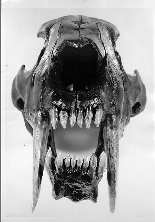
Place Based Project
Rancho La Brea Tar Pits



History
Thousands of years ago, local native Americans used the tar as a glue and waterproof caulking. When Westerners arrived they mined the pits, using the tar as roofing (The La Brea Tar Pits). “El Pueblo de Nuestra Senora la Reina de los Angeles was founded in 1781. The citizens of the pueblo used asphalt from the local seeps to waterproof their roofs of their houses and as a fuel”. William Denton was an Englishman who taught at Wellesley College. In 1875 he was given a canine of a saber-toothed cat when he visited the La Brea Tar Pits. He was the first person to recognize and describe fossils in the tar pits.
In the beginning of the twentieth century, fossils were “rediscovered” by oil geologists when the owners of the pits abandoned the asphalt mining when they found oil on their land. In 1913, the owners (the Handcock family) gave the Los Angeles County Museum rights to excavate fossils from the tar pits for two years (Animals of the La Brea Tar Pits).
Los Angeles was cooler and moister 40,000 years ago. We can tell by examining the plant fossils from the La Brea tar pits. Many of the plants and animals are similar to ones that would be there today if the city was not there. There are a number of animals found in the tar pits that are no longer found in North America (The La Brea Tar Pits). One of these animals includes the California State fossil. The "saber-toothed tiger", or Smilodon, is the California State Fossil and the second most common fossil mammal found in the La Brea tar pits. (What is a Sabertooth?).
“Today, this spot is in the middle of downtown Los Angeles, eloquent testimony to urban sprawl, but the pools and deposits of asphalt still remain. For these are the La Brea tar pits, containing one of the richest, best preserved, and best studied assemblages of Pleistocene vertebrates, including at least 59 species of mammal and over 135 species of bird. The tar pit fossils bear eloquent witness to life in southern California from 40,000 to 8,000 years ago; aside from vertebrates, they include plants, mollusks, and insects -- over 660 species of organisms in all.” (The La Brea Tar Pits).